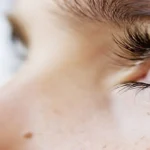Double Elevator Palsy
Double elevator palsy, also known as bilateral superior rectus palsy, is a condition in which the muscles that control the movement of the eyes, known as the superior rectus muscles, are weak or paralyzed. This results in a drooping of the upper eyelids and an inability to look up.
Symptoms of double elevator palsy include drooping of the upper eyelids, difficulty looking up, and double vision. These symptoms can make it difficult for individuals to perform daily activities and can lead to self-consciousness.
Diagnosis of double elevator palsy is typically made through a physical examination by an ophthalmologist. During the examination, the doctor will assess the movement of the eyes and the strength of the superior rectus muscles. The doctor may also use eye tests such as the cover test and the forced duction test to assess the extent of the muscle weakness or paralysis.
Common treatment methods for double elevator palsy include surgical intervention, such as a procedure called a superior rectus muscle recession, in which the superior rectus muscle is repositioned to correct the drooping of the eyelid. Additionally, Botox injections can also be used to temporarily paralyze the muscle and lift the eyelid.
In some cases, the condition may be caused by an underlying condition such as a brain injury, tumors, or neurological disorder, so it is important to address any underlying conditions as well.
Preventing double elevator palsy from occurring is challenging as it can be caused by various underlying conditions, but it is important to maintain good overall health by following a healthy diet and regular exercise. Annual health check-ups and corporate health & wellness programs can help to identify and address any underlying conditions that may be contributing to the development of double elevator palsy.
It’s important to note that double elevator palsy can have a significant impact on the quality of life of those affected, and prompt diagnosis and treatment can help to improve symptoms and prevent further complications.
In summary, Double elevator palsy is a condition characterized by weakness or paralysis of the superior rectus muscles, resulting in drooping of the upper eyelids and difficulty looking up. It can be diagnosed through a physical examination and treated through surgical intervention or Botox injections. Preventing double elevator palsy from occurring is challenging, but maintaining good overall health through a healthy diet, regular exercise, annual health check-ups and corporate health & wellness programs can help to address any underlying conditions that may be contributing to the development of double elevator palsy.
Blog Categories
Top rated products
-
 Full Body Health Checkup I
Rated 5.00 out of 5
Full Body Health Checkup I
Rated 5.00 out of 5₹3,000.00Original price was: ₹3,000.00.₹1,770.00Current price is: ₹1,770.00. -
 Progno Health III
Progno Health III
₹3,900.00Original price was: ₹3,900.00.₹2,145.00Current price is: ₹2,145.00. -
 Healthy Diva
Healthy Diva
₹9,000.00Original price was: ₹9,000.00.₹5,850.00Current price is: ₹5,850.00. -
 Advance Health Check Plus -M/F -98 Parameters
₹1,999.00
Advance Health Check Plus -M/F -98 Parameters
₹1,999.00
-
 IT & ITES PACK II
IT & ITES PACK II
₹12,000.00Original price was: ₹12,000.00.₹6,600.00Current price is: ₹6,600.00.
About Us
Progno Health is a Corporate Health & Wellness Specialist providing services to Pan India. We offer Pre-employment Health Checkup Packages, Annual Health Checkup Packages, Executive Health Checkup Packages, Occupational Health Checkup Packages, and other Health & Wellness Services.











